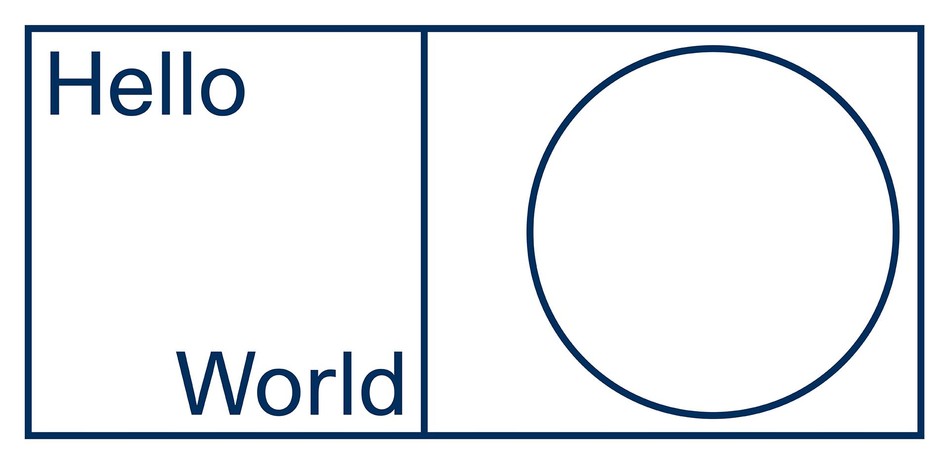Hello World
28 Apr - 26 Aug 2018

Logo of the exhibition "Hello World. Revision einer Sammlung" © Staatliche Museen zu Berlin, Nationalgalerie“, Design: Timo Hinze und Paul Spehr
Hello World. Revising a Collection is a critical inquiry into the collection of the Nationalgalerie and its predominantly Western focus: What could the collection look like today, had an understanding characterised its concept of art, and consequently also its genesis, that was more open to the world? How might the canon and the art historical narratives themselves have changed through a widening and multiplication of perspectives? With these questions as starting points, the exhibition unfolds in 13 thematic chapters as a many-voiced collaboration of internal and external curators, encompassing the whole exhibition space of the Hamburger Bahnhof – Museum für Gegenwart – Berlin.
Hello World places the focus on transnational artistic networks and cross-cultural exchanges from the late 19th century to the present. Works and groups of works from the collection of the Nationalgalerie provide points of departure for thirteen narratives. Such stories include Heinrich Vogeler’s path to the Soviet Union, Dadaist Tomoyoshi Murayama’s sojourn in Berlin in the 1920s, and the collaborations between Nicolás García Uriburu and Joseph Beuys.
More than two hundred works - paintings, sculptures, installations, videos and films – from the holdings of the Nationalgalerie are supplemented with roughly one hundred fifty works on loan from other collections of the Staatliche Museen zu Berlin and the Stiftung Preussischer Kulturbesitz: Ethnologisches Museum, Kunstbibliothek, Kupferstichkabinett, Museum für Asiatische Kunst and the Zentralarchiv as well as the Ibero-Amerikanisches Institut and the Staatsbibliothek zu Berlin. In addition, four hundred artworks, magazines and documents are presented in the exhibition from other national and international collections. All in all, the show features works by more than 250 artists.
The collection of the Nationalgalerie serves this exhibition both as a point of departure and frame of reference. As an institution, the Nationalgalerie of the Staatliche Museen zu Berlin today encompasses five museums: Alte Nationalgalerie, Neue Nationalgalerie, Museum Berggruen, Sammlung Scharf-Gerstenberg and Hamburger Bahnhof – Museum für Gegenwart – Berlin. Its extensive holdings date from the late eighteenth century to the present and reflect the ups and downs over this period. Founded in 1861, the collection had many of its artworks classified as “degenerate” by the Nazis, a verdict which inevitably led to their removal or destruction. Germany’s division after World War II also left its traces: while the Nationalgalerie in the west of Berlin shifted its attention to Western European and North American art, the Nationalgalerie in the eastern part of the city concentrated on German art. Hello World is the first exhibition to explicitly call the Eurocentric character of the Nationalgalerie’s collections into question, opening up a discussion on how a museum collection can reposition itself today.
The exhibition was developed by Udo Kittelmann with Sven Beckstette, Daniela Bystron, Jenny Dirksen, Anna-Catharina Gebbers, Gabriele Knapstein, Melanie Roumiguière and Nina Schallenberg for the Nationalgalerie – Staatliche Museen zu Berlin, with contributions from guest curators Zdenka Badovinac, Eugen Blume, Clémentine Deliss, Natasha Ginwala and Azu Nwagbogu.
On the occasion of the exhibition an extensive program of events, performances, discussions, and artists talks with take place. A catalogue will be published by Hirmer Verlag in June 2018.
Hello World places the focus on transnational artistic networks and cross-cultural exchanges from the late 19th century to the present. Works and groups of works from the collection of the Nationalgalerie provide points of departure for thirteen narratives. Such stories include Heinrich Vogeler’s path to the Soviet Union, Dadaist Tomoyoshi Murayama’s sojourn in Berlin in the 1920s, and the collaborations between Nicolás García Uriburu and Joseph Beuys.
More than two hundred works - paintings, sculptures, installations, videos and films – from the holdings of the Nationalgalerie are supplemented with roughly one hundred fifty works on loan from other collections of the Staatliche Museen zu Berlin and the Stiftung Preussischer Kulturbesitz: Ethnologisches Museum, Kunstbibliothek, Kupferstichkabinett, Museum für Asiatische Kunst and the Zentralarchiv as well as the Ibero-Amerikanisches Institut and the Staatsbibliothek zu Berlin. In addition, four hundred artworks, magazines and documents are presented in the exhibition from other national and international collections. All in all, the show features works by more than 250 artists.
The collection of the Nationalgalerie serves this exhibition both as a point of departure and frame of reference. As an institution, the Nationalgalerie of the Staatliche Museen zu Berlin today encompasses five museums: Alte Nationalgalerie, Neue Nationalgalerie, Museum Berggruen, Sammlung Scharf-Gerstenberg and Hamburger Bahnhof – Museum für Gegenwart – Berlin. Its extensive holdings date from the late eighteenth century to the present and reflect the ups and downs over this period. Founded in 1861, the collection had many of its artworks classified as “degenerate” by the Nazis, a verdict which inevitably led to their removal or destruction. Germany’s division after World War II also left its traces: while the Nationalgalerie in the west of Berlin shifted its attention to Western European and North American art, the Nationalgalerie in the eastern part of the city concentrated on German art. Hello World is the first exhibition to explicitly call the Eurocentric character of the Nationalgalerie’s collections into question, opening up a discussion on how a museum collection can reposition itself today.
The exhibition was developed by Udo Kittelmann with Sven Beckstette, Daniela Bystron, Jenny Dirksen, Anna-Catharina Gebbers, Gabriele Knapstein, Melanie Roumiguière and Nina Schallenberg for the Nationalgalerie – Staatliche Museen zu Berlin, with contributions from guest curators Zdenka Badovinac, Eugen Blume, Clémentine Deliss, Natasha Ginwala and Azu Nwagbogu.
On the occasion of the exhibition an extensive program of events, performances, discussions, and artists talks with take place. A catalogue will be published by Hirmer Verlag in June 2018.
